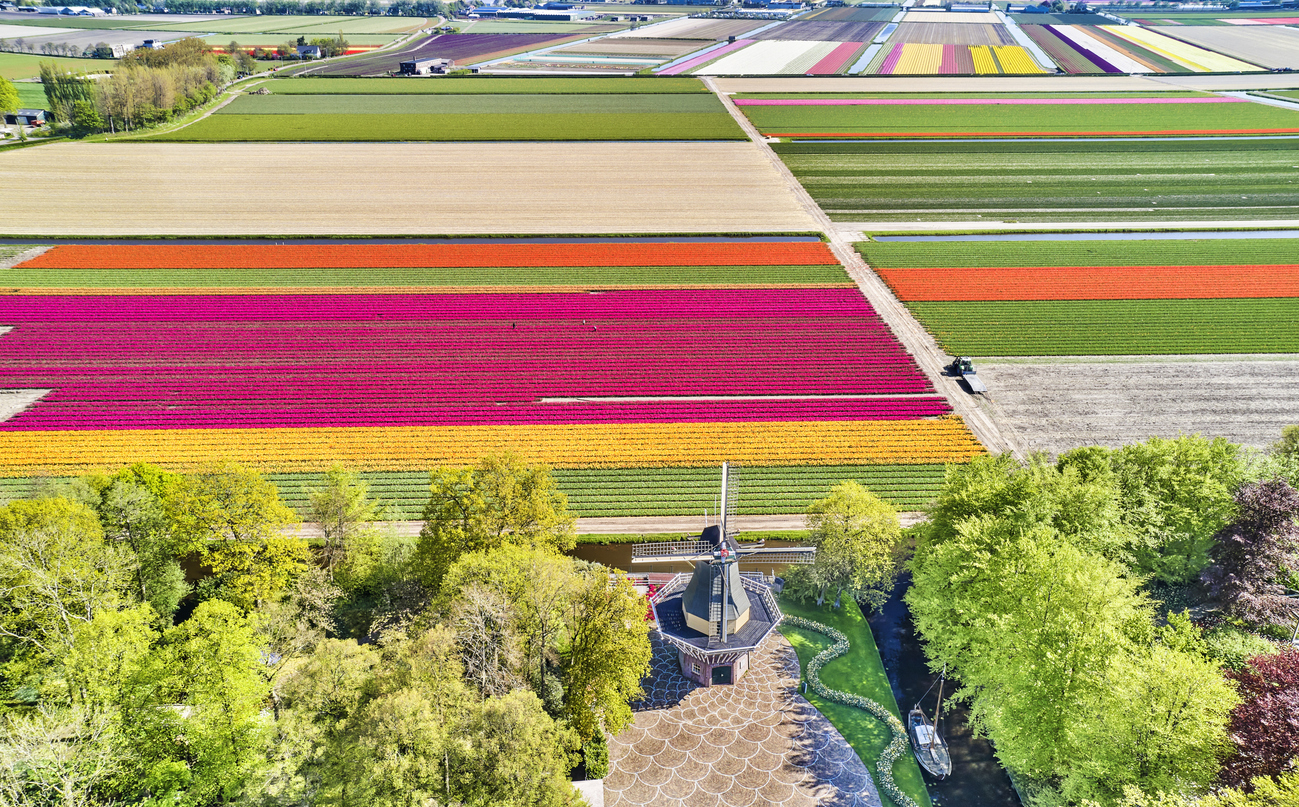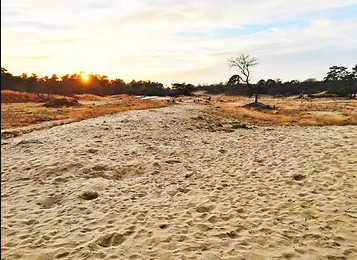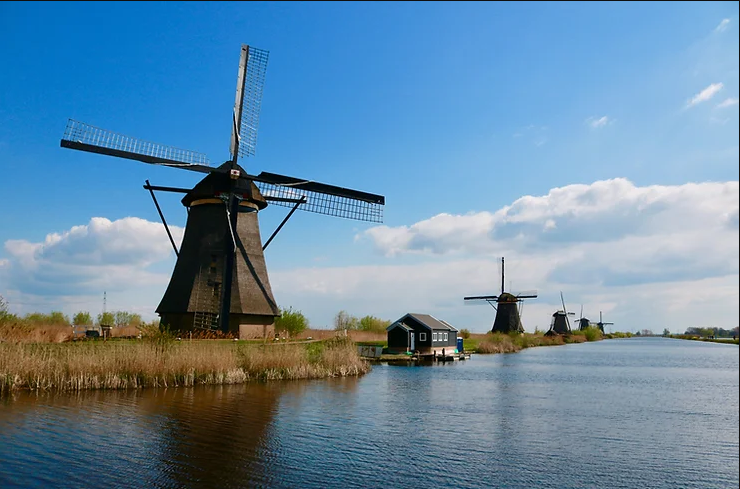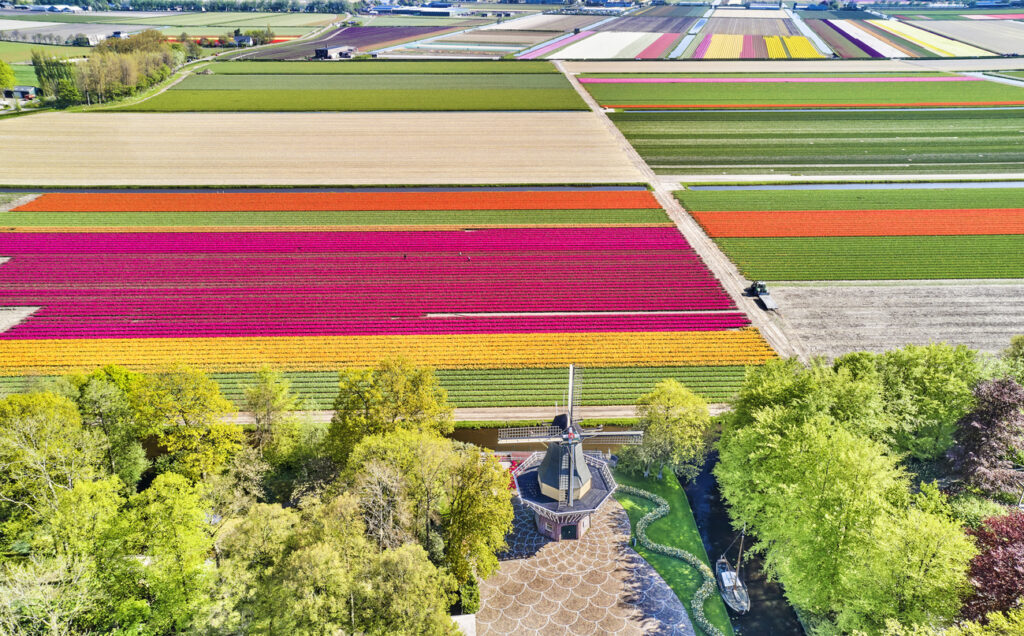
The Netherlands is known for being incredibly flat, which often sparks the curiosity of travelers. Instead of hills or mountains, the land of The Netherlands is mostly wide and flat. This unique feature makes people wonder why it’s like this compared to other places. Understanding the reasons behind it can teach us a lot about the country’s past and its geography. So, it’s no surprise that people find it fascinating to explore.
Natural Geography Of The Netherlands:
To understand why the Netherlands is so flat, we need to look back at its geological past. Much of the country is part of the huge European Plain which is a vast lowland area that stretches eastward into Asia. This flat land was formed over time by sediment carried by large rivers like the Rhine, Meuse, Scheldt, and Eems, which flow into the Netherlands from nearby countries.
During the Saalian glacial period, the northern part of the Netherlands was covered by ice from Scandinavia. When the ice melted, it left behind a thick layer of debris called moraine, which added to the flatness of the land. In the central and southern regions, the Rhine and Meuse rivers deposited layers of silt and gravel from the mountains of Europe, creating a wide, level landscape.

The Reclamation Of Land From The Sea:
While the Netherlands’ natural geography played a significant role in shaping its flatness, human effort has played a big part too. A remarkable 26% of the Netherlands is living below sea level, but the Dutch have masterfully reclaimed these areas through an intricate system of dikes, polders, and water management techniques.
The process of land reclamation in the Netherlands dates back to medieval times when they built dikes to separate submerged land into sections called polders. The seawater was then carefully pumped out of these polders, initially using manpower and horsepower, and later replaced by windmills and modern pumping systems.
One of their most impressive projects began in 1920, called the Zuiderzee project. They built a 19-mile-long dam called the Afsluitdijk between 1927 and 1932, which cut off the Zuiderzee( a shallow sea) from the Waddenzee and the North Sea. . This huge dam turned the southern part of the Zuiderzee into the IJsselmeer, a freshwater lake. Around it, they created four large polders, known as the IJsselmeer Polders.
Protecting the Land: The Intricate System of Dikes and Delta Works:
The Netherlands’ flat land and closeness to the sea have made it prone to flooding and storm surges. To protect against this, the Dutch constructed a sophisticated system called the Delta Works.
The devastating North Sea flood of 1953, which caused significant loss of life and widespread flooding, prompted the development of the Delta Project. This ambitious plan aimed to reduce the coastline by a remarkable 450 miles (725 km), prevent soil from becoming too salty, and aid the growth of the southwest delta region by building dams and bridges.
Among the most impressive parts of the Delta Works is the Eastern Scheldt storm surge barrier. This barrier, which spans five miles, has many openings that can be closed during floods. Interestingly, it’s designed to stay open under normal conditions, allowing saltwater to flow freely into the estuary and maintaining most of the natural tidal movement, which helps protect the environment.
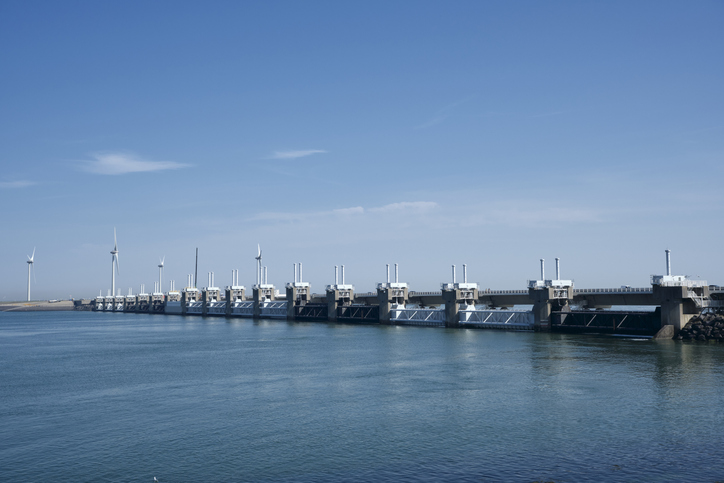
The Challenges of Sinking Ground and Rising Sea Levels:
Despite the Netherlands’ impressive achievements in reclaiming land from the sea and controlling floods, the country still faces issues like sinking land and rising sea levels due to climate change. The constant drainage needed to keep certain areas dry has caused the land to sink, with some places sinking as much as seven millimeters per year.
Climate change has made this problem worse, as warmer summers dry out the soil faster, leading to more sinking. This has resulted in damage to buildings, roads becoming less stable, sinkholes appearing, and an increased risk of flooding, all of which threaten the country’s infrastructure.
To tackle these challenges, the Dutch government has adopted innovative strategies like the “Room for the Water” project. Instead of just building higher levees, this approach involves creating reservoirs inland to catch floodwater, allowing the Dutch to continue their tradition of living alongside water rather than fighting against it.
The Influence of Flatness on Dutch Infrastructure:
The Netherlands’ flat landscape has significantly influenced how infrastructure and cities are planned. Without hills or mountains, it’s been easier to build a vast network of roads, railways, and transportation systems, connecting different parts of the country efficiently.
Urban planners in the Netherlands favor compact cities, where residential areas, businesses, and recreational spots are close together. This approach saves space and encourages eco-friendly transportation like biking and walking.
When talking about bikes, the Dutch are experts in creating bike-friendly infrastructure. They’ve built a huge network of bike lanes and paths, taking advantage of the flat land. This focus on cycling has eased traffic congestion, reduced pollution, and improved people’s health and happiness.
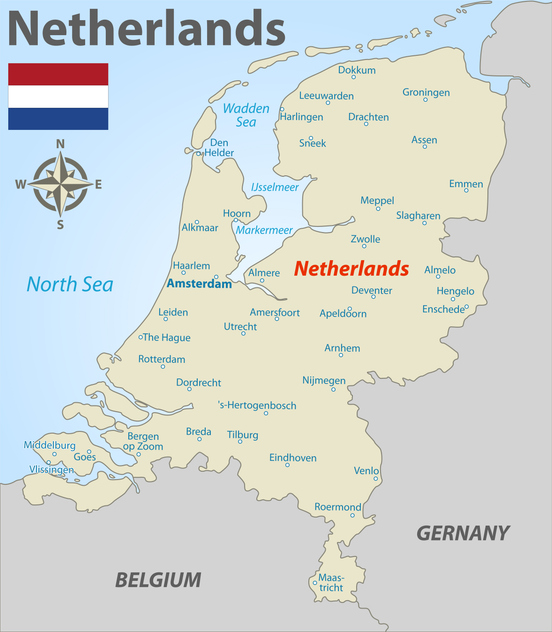
The Cultural Significance of Flatness in Dutch Society:
The flat landscape of the Netherlands has not only shaped the country’s physical environment but has also influenced its cultural identity and societal values. Dutch people have a practical and adaptable approach to life, shaped by their surroundings and the challenges of their unique landscape.
The spirit of innovation and resilience that has characterized the Dutch people can be traced back to their struggle against the forces of nature. From the construction of dikes and polders to the ingenious land reclamation projects, the Dutch have shown an unwavering determination to shape their environment and create a prosperous nation.
This mindset influences everything, from how cities are planned to how water is managed. The flat landscape fosters a strong sense of community and collaboration because the Dutch know that protecting their homeland requires collective effort.
Conclusions:
The Netherlands’ flatness is a result of both natural forces and human innovation working hand in hand. From the formation of the European Plain to the ways the Dutch reclaimed land and managed water, they’ve shown remarkable adaptability, turning difficulties into advantages.
In a world facing climate change and higher sea levels, the Netherlands sets an example of resilience and creativity. By embracing their flat terrain and working together with determination, they’ve built a successful and eco-friendly country. Their story inspires people worldwide, drawing visitors who are fascinated by their achievements.
